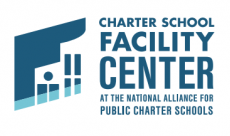Community Development Financial Institutions are typically thought of as short-term lenders, and they will be discussed further in the next section. However, certain CDFIs have been able to borrow long-term money from the federal government through the U.S. Treasury’s Bond Guarantee Program. The program authorizes certain bond issuers, known as Qualified Issuers, to issue bonds with fixed interest rates and maturity dates of up to 29.5 years on behalf of approved or Eligible CDFIs. The CDFIs, in turn, use the proceeds to invest in community development projects, including charter school facility projects. The Secretary of the Treasury provides a 100% guarantee on the bonds, up to $1 billion a year, which are sold to the Federal Financing Bank, a U.S. government corporation.
Since 2013, the CDFI Fund, a department within the U.S. Treasury, has approved $1.6 billion in bond issuance through three Qualified Issuers on behalf of 26 Eligible CDFIs. Bond issues are in minimum amounts of $100 million, but multiple CDFIs can participate in a single issuance. Details on awards are included in Appendix D.
The program has certain requirements, including that loans be secured by a first lien and have a loan-to-value ratio of 80% or less on the real estate collateral. Several of the CDFIs have adapted to these requirements by providing a subordinate tranche of financing, which allows LTVs of up to 90%. However, this financing source will require an equity contribution from the charter school borrower, unlike the previously discussed bond sources. Due to other program parameters, this funding source is better suited to refinancing than to new money purposes.
In addition, the maximum term for Bond Guarantee Program (BGP) financed debt is lower than the bond market. CDFIs are awarded the ability to draw down 29.5-year money at the time of award and have a two-year period to originally commit capital and a five-year period to draw down capital. Thus, depending on when the school’s loan is originated, the term could be limited to the remaining life of the CDFI’s bond, as short as 24.5 years. If CDFIs are employing recycled program capital, the term could be shorter. The loans to schools can be fully amortizing over these shorter periods or they can have longer amortization periods, up to 30 years, with a principal balance, or balloon, due at maturity. There may be a prepayment penalty on BGP loans; however, penalties vary based on individual CDFI policies.
Depending in part on the general market environment, interest rates for BGP financing will likely be higher than for the other long-term options included in this guide. Adding in program fees and the additional “spread” CDFIs charge to the base Treasury rates, end interest rates to borrowers have ranged between 5% and 8% since 2013, when the program was established. These higher interest costs are countered partially by lower costs of issuance than the bond market and no requirement for the school to borrow additional proceeds to fund a debt service reserve.
According to the Inspector General’s Audit of the CDFI Fund’s 2019 and 2018 financial statements, as of September 30, 2019, $1.1 billion of the $1.6 billion awarded had been drawn to finance projects in a variety of asset classes, with a remaining balance of $500 million. Financing for charter school facilities was the second largest use of funds, totaling $289 million, or 27% of funds deployed. These funds financed charter school projects in 16 states (Arizona, California, Colorado, Connecticut, D.C., Florida, Illinois, Maryland, Michigan, Minnesota, Missouri, New Jersey, New York, Ohio, Pennsylvania, and Tennessee).
While no Idaho schools have yet accessed the program, a number of BGP awardees serve a national market and could potentially finance charter schools in Idaho.
Related Articles in Undertsanding your Needs:
- CDFI Bond Guarantee Program
- Facility Refinancing: Preparation & Solicitation
- Assembling Your Facility Refinancing Team
- Facility Refinancing Guide to Underwriting
- Facility Refinancing: Credit Approval, Rating, and Marketing
- Facility Refinancing Guide to Closing
- Facility Refinancing Guide to the Bond Market
- Facility Refinancing Guide to State Credit Enhancement
- Facility Refinancing Guide to Philanthropically-Enhanced Funds, Equitable Facilities Fund
- Facility Refinancing Guide to Banks and Credit Unions
- Facility Refinancing Guide to Community Development Financial Institutions
- Facility Refinancing Guide to Philanthropically-Enhanced Funds, Facilities Investment Funds
- Facility Refinancing Guide to Replacement and Reporting
Legal Disclaimer:
Nothing in this material should be construed as investment, financial, brokerage, or legal advice. Moreover, the facts and circumstances relating to your particular project may result in material changes in the processes, outcomes, and expenses described herein. Consult with your own professional advisors, including your financial advisors, accountants, and attorneys, before attempting to consummate any transaction described in this material.

